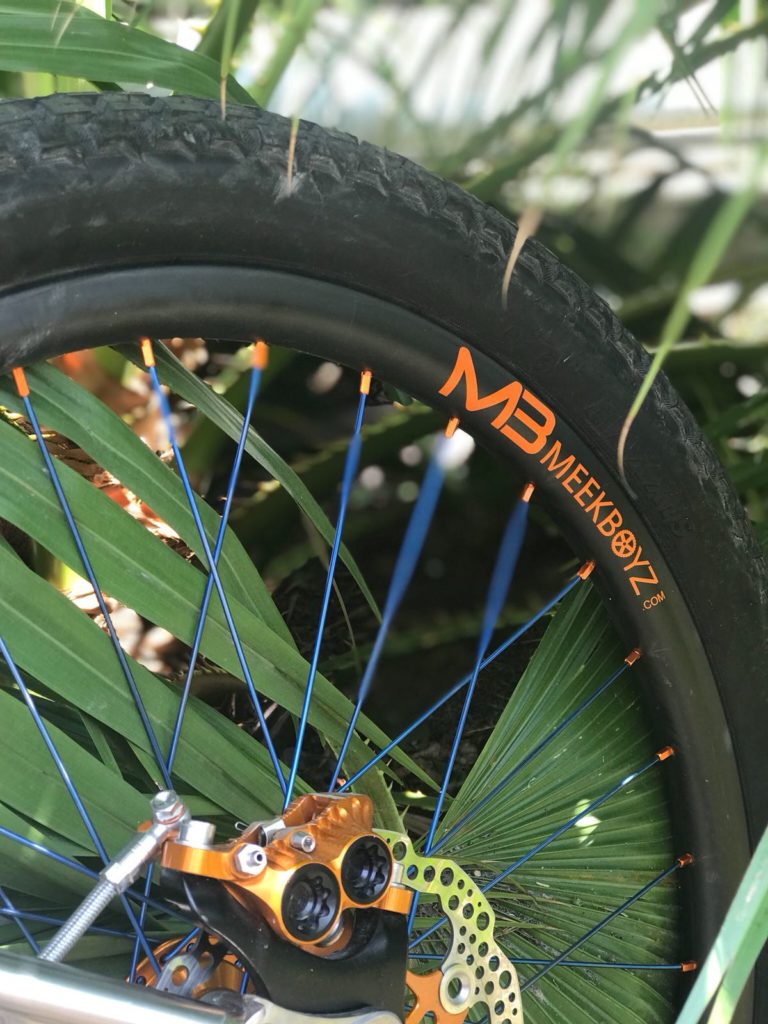Why Carbon remains the Choice of Champions!
by Steven Meek
The “C” word continues to overshadow most other advances in the biking industry and for very good reason. The use of carbon has been a major catalyst for some of the biggest technological advances in the mountain biking industry, and many other sports. Its superiority reigns for a variety of different reasons: high tensile strength and stiffness, durability, integrity, low thermal expansion, limitless design possibilities, not to mention comfort and handling.
The biggest benefit of carbon bikes and components is the weight advantage, which is particularly noticeable when riding through difficult terrain. The difference in shaving weight is undeniable, especially when a rider is becoming tired. Lightweight, carbon bikes give riders more time on the hills to enjoy their riding without being weighed down. This is particularly critical for young riders where weight is a huge factor.
Another major advantage with the material is that it is much stronger and more durable than aluminium. Aluminium bike frames and parts, weaken from lots of movement and stress and are more likely to crack. Carbon is not as susceptible to this weakness due to the strength of its carbon bonds and high-grade manufacturing process. Most of the big brand bike companies now give a full guarantee on their carbon frames due to high integrity of the material.
Asia’s complete dominance in composite construction is also an undeniable reality in today’s carbon bike industry. China’s carbon factories have been making frames for the best brands in the world for years, and have access to highly skilled designers and engineers. Recently, most remaining major bike companies have shifted their carbon centres to China and Taiwan to capitalise on this wealth of centralised intellectual capital and expertise.
Carbon’s Environmental Credentials
When it comes to carbon, it is important to acknowledge there is some genuine concern about its environmental impact. However, it is prudent to examine carbon footprints in total perspective. Research shows the actual carbon footprints for aluminium and carbon bikes don’t differ significantly when you compare the total energy production output and environmental factors over time. While carbon fibre is initially energy-intensive it doesn’t corrode, rust, fatigue or degrade. This means that carbon bike parts have a much longer lifecycle compared to aluminium, which will need to be replaced several times during the same time period, giving carbon a distinct advantage when comparing its full lifecycle impact.
In terms of waste, aluminium is currently easier to recycle than carbon. Thankfully, a reliable carbon recycling process is now making steady headway to reduce the footprints of the material even further, but it isn’t cheap! It involves a process called “pyrolysis” which basically means to break down by fire. The carbon fibre is heated to extremely high temperatures, in an oxygen-free environment, so it doesn’t actually catch fire. The extra materials melt away to leave pristine carbon fibres that can be reused.
Carbon is without doubt, the material of the future and if governments can support this with recycling incentives this will help tip the footprint further in its favour. Nowadays 90% of high performance sports use carbon fibre, everything from tennis racquets to hockey sticks to boat masts and sails. It’s here to stay due to its superior quality and durability.
When designing and engineering bikes, carbon is the material of choice. It can be laid up by hand and bike makers can choose to place the strength in specific areas of need. Compare this to aluminium, which faces severe limitations due to the mechanical process of manufacturing the tubing, and you can see why carbon has the edge.
Versatility and Creativity
The beauty of carbon is that bike engineers can also be more creative in shape. The designs are unlimited as the material is so versatile. Any shape can be formed and it is lighter yet stronger than aluminium. With the rapid evolution of new computer programmes, designs can be strength-tested in detail before the frames are made. This combination of a versatile material and new computer software gives greater creative license and means the bikes of the future will become more and more sophisticated, highly ingenious in design and better in performance.
The cost still remains high at present due to its labour intensity but as 3D printing becomes more accessible this factor will hopefully become less of an obstacle. However, with current technology, carbon bikes will continue to be handmade, which comes of course with a price tag. The high labour intensity is largely reflected in the cost of the hardworking and highly skilled teams who work together to make these intricate frames.
Why buy a carbon frame bike?
So, next time you are mulling over the benefits of investing in a carbon bike, have a think about the considerations mentioned here. Carbon composite technology in sport is clearly the signature material of the foreseeable future and it is creating exciting pathways in bike designs for the coming years ahead. We are only just beginning to appreciate its endless possibilities. Therefore, we need to prepare responsibly and wisely for its dominance and ensure its environmental sustainability in sport.
On another note, if bike companies would stop meddling with size standards in the name of profit, carbon products could travel through four or five generations of riders in a highly sustainable second-hand market. This is why we have no intention of changing the MeekBoyz bike range every few years and we certainly won’t be coming out with needless size changes in an industry already gone mad with outrageous size adjustments, supported by buyers who feel the need to upgrade every year.
Ethical sustainability in mountain biking and consideration of social and environmental choices need to come into play when buying a bike. Riders should consider the long-term global impact and benefits to all. As high-grade carbon bikes pass through the second-hand markets, their quality and integrity will endure, but at a price that opens them up for riders of all backgrounds. Compare it to a car – not everyone buys new, but the good ones last longer and enter the second-hand market for everyone to enjoy.
Buying quality is a sensible and viable reality for the biking industry. If more people in the bike industry adopt this long-term perspective of sustainability, then the carbon bike industry can lead the way in ensuring environmental and social integrity for the riding community at large.
Want to find out more about MeekBoyz? Drop us a line here! [wpforms id=”1695″]




